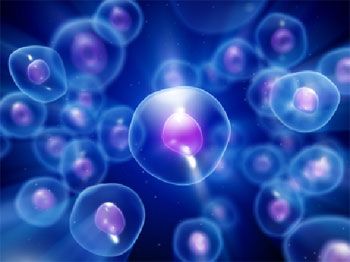Introduction
In the intricate orchestra of biological processes within our bodies, redox cell-signaling molecules play a crucial and multifaceted role. These molecules, often referred to as “redox messengers,” are involved in maintaining cellular homeostasis, regulating various physiological functions, and even influencing the development and progression of diseases. This article delves into the fascinating world of redox cell-signaling molecules, shedding light on their importance in both health and disease.
Redox Cell-Signaling Molecules: An Overview
At the heart of redox cell signaling lies the delicate balance between oxidants and antioxidants. Redox signaling molecules are intermediaries in this balance, primarily consisting of reactive oxygen species (ROS) and reactive nitrogen species (RNS). These molecules, which include hydrogen peroxide (H2O2), superoxide (O2•−), and nitric oxide (NO), are produced as natural byproducts of metabolic processes within cells.
The Dual Nature of ROS: Friend and Foe
Reactive oxygen species, often labeled as the “bad guys” due to their association with oxidative stress and cellular damage, actually serve as essential signaling molecules in several physiological processes. When produced in controlled amounts, ROS participate in the following functions:
- Cellular Signaling: ROS can act as secondary messengers in signal transduction pathways, regulating processes like cell growth, differentiation, and apoptosis.
- Immune Response: White blood cells generate ROS to combat invading pathogens. This oxidative burst is crucial for immune defense.
- Vasodilation: ROS, such as hydrogen peroxide, participate in relaxing blood vessels, aiding blood flow regulation.
- Hormone Action: Redox signaling can modify the activity of hormones, influencing various physiological responses.
Antioxidants and the Yin-Yang of Redox Signaling
To maintain a harmonious redox balance, the body employs a robust antioxidant defense system. Antioxidants, like glutathione and superoxide dismutase, neutralize excess ROS and prevent oxidative damage. This intricate interplay between ROS and antioxidants ensures the dual nature of redox signaling, where these molecules can be both detrimental and beneficial, depending on their concentration and context.
Redox Signaling in Health
In a healthy system, redox signaling molecules contribute to various essential physiological processes:
- Cellular Adaptation: Redox signaling enables cells to adapt to changing environments, such as exercise-induced stress or exposure to toxins.
- Tissue Repair: ROS and RNS help orchestrate tissue repair and regeneration by promoting cell proliferation and migration.
- Metabolic Regulation: Redox signaling molecules influence metabolic pathways, including glucose uptake and insulin sensitivity.
- Aging: The balance of redox signaling becomes disrupted with age, contributing to the aging process. Understanding and modulating redox signaling could hold the key to extending healthy lifespans.
Redox Signaling in Disease
Conversely, an imbalance in redox signaling can lead to a range of diseases:
- Oxidative Stress-Related Diseases: Chronic oxidative stress is implicated in various conditions, including cardiovascular disease, neurodegenerative disorders (e.g., Alzheimer’s disease), and cancer.
- Inflammatory Disorders: Dysregulated redox signaling can exacerbate inflammation, contributing to autoimmune diseases such as rheumatoid arthritis.
- Metabolic Disorders: Diabetes and obesity are characterized by altered redox signaling, affecting insulin sensitivity and glucose metabolism.
- Aging: The decline in redox homeostasis is linked to the aging process, with cellular damage accumulating over time.
Therapeutic Potential of Redox Signaling Modulation
Given the pivotal role of Redox cell-signaling molecules in health and disease, researchers are exploring therapeutic interventions aimed at modulating redox balance. This includes the development of antioxidants, redox-sensitive drugs, and lifestyle interventions such as dietary changes and exercise.
Conclusion
Redox cell-signaling molecules are indispensable players in the intricate tapestry of life. Their dual nature, as both mediators of health and instigators of disease, underscores their significance. Understanding redox signaling at a molecular level offers the potential for novel therapies that could harness the power of these molecules to promote health and combat a wide array of diseases. As research in this field continues to advance, we can look forward to a future where redox signaling plays a central role in the prevention and treatment of various health conditions.





